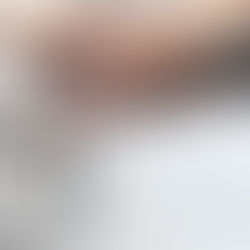And What to Use Instead

Bleach is such a common thing in our modern world that most don’t think much about it, until…something gets ruined. A favorite piece of clothing, a wood floor, an antique linen. Then all hell breaks loose.
When I had my cleaning company, I did not allow my employees to use bleach or bleach-containing products like…AT ALL. Even if the client wanted us to, it was strictly forbidden. First, I had a “green” cleaning company, hello! And second, bleach is a beast. As mentioned before, it can ruin almost everything it touches but it is also toxic to plant, animal, and human life.
Yes, it will break down to salt…eventually. The shelf life is only about 6 months. And it is considered safe when used according to label instructions. But who actually reads the labels? Right… That’s why I wouldn’t allow my employees to use it; the liability was too high.
But…it’s a disinfectant!
Yes, it is, but…
In order for bleach (or any chemical disinfectant) to actually, you know, disinfect something, it has to stay wet with the product for 10 minutes. It’s called “dwell time”. That’s right, “spray and wipe” disinfecting is a myth. Seriously…do you want to huff bleach for 10 minutes to disinfect your kitchen, or bathroom, or….
Which leads me to the next point. It’s supposed to be used “with adequate ventilation”. The irony here is that most people use bleach to kill mold, which grows in poorly ventilated areas.
Go figure.
The fumes are toxic and no joke. So…why use it as a disinfectant when there are other not-toxic alternatives?
But…I don’t use bleach; I just use the wipes.
Take a quick peek at the label and warnings for those wipes. If they contain bleach (among other things), then it also needs to be rinsed well and air-dried. Especially if they’re being used on food preparation surfaces like countertops and cutting boards. Don’t forget to wash your hands after using them too. And no matter how gross your child may get after eating or playing, DO NOT use disinfecting wipes on them.
But… the laundry!
Okaaaaay. Why? Really…why? “White” is overrated…in SO many ways.
Eventually, bleach will yellow your whites if used in excess. More is not more. Truly, only a tiny amount of bleach per load is sufficient...like a couple tablespoons if you absolutely HAVE to. In fact, bleach actually works better watered down a bit, but it must be rinsed thoroughly.
But then again…sending a bunch of bleach through the sewer plumbing (depending on where you live) can also put aquatic life at risk. Is having white socks really that important?
But….the TOILET!
Are you cleaning it with “stuff” still in it? No, of course not.
Let me be plain here…we poop and pee into water that’s cleaner than many people in the world (including the US) get to drink. So, flush it once or twice, pour in some vinegar or peroxide (both great sanitizers) and a dribble of soap and get busy. It might be super cold water, but that’s the worst of it.
So WHAT should I use then?
Don’t worry, I haven’t left you high and dry. There are so many other options besides bleach!
1. Unless someone in your household is actively sick with some crud, disinfecting is not necessary. Simple wipe downs with soap and water are more than sufficient for most homes.
2. Laundry options include oxidizing detergents (though I don’t recommend them because of the perfumes), and washing soda with a little organic liquid soap. Straight peroxide works great on many stains including blood. No fumes!
3. The toilet… Try to get over the cleaning of it. We all use them. If your water leaves a mineral ring or streaks that the brush (or your hands) doesn’t get off, use a pumice stone around the ring and down the hole where mineral buildup can stain as well. No chemicals…at all!
The idea here is to keep chemicals out of our water, air, and environment. Just because bleach has been around for a long time, doesn’t mean it’s good.





